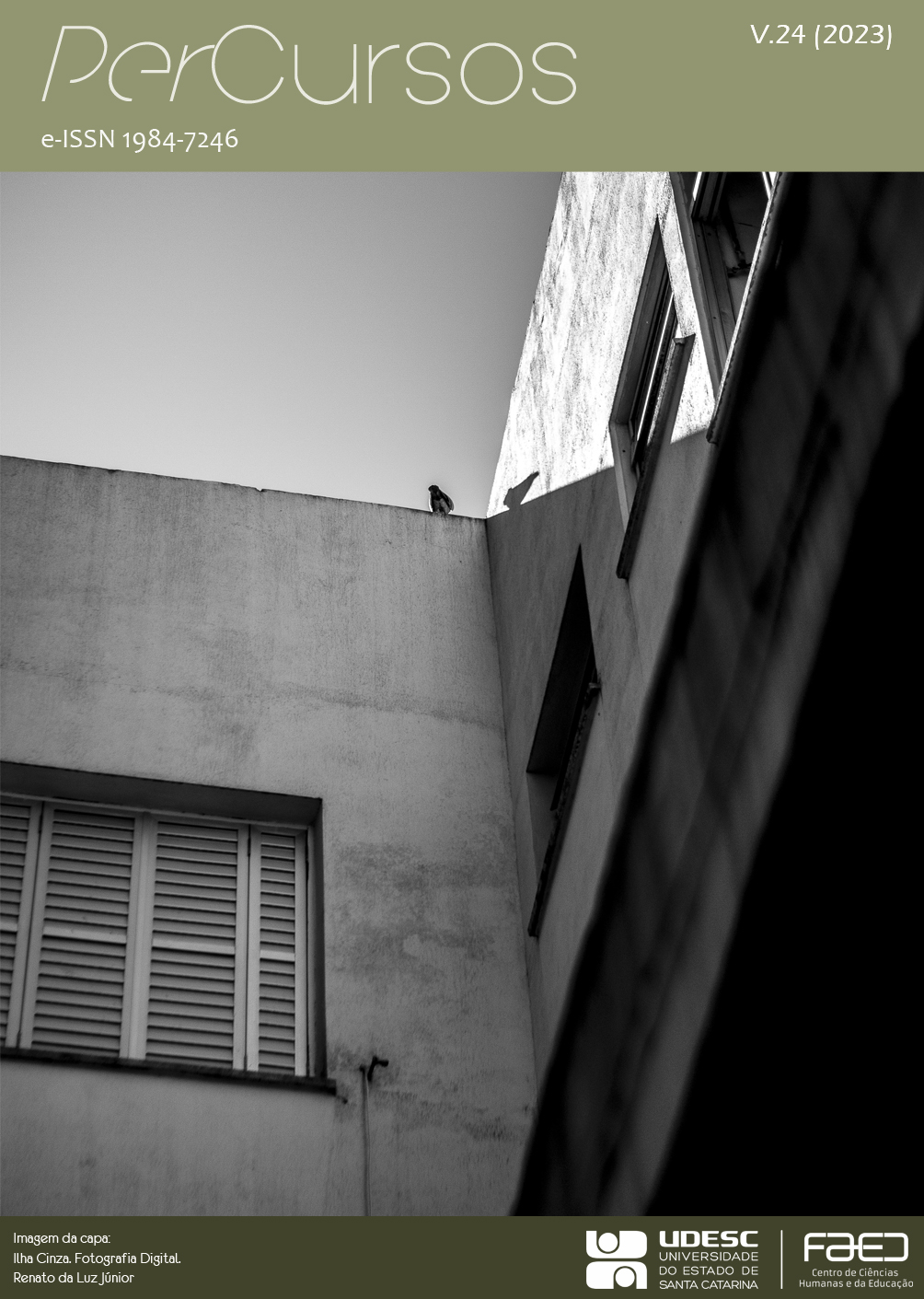"Geography of silence": characteristics of the spatiality of deaf people over time
DOI:
https://doi.org/10.5965/19847246242023e0306Keywords:
deaf geography, deaf community, socio-spatial inclusion, cityAbstract
The absence of geographical studies on the spaces of minorities, including the deaf, is a clear gap in the analysis of the current Brazilian city. This article aims to present some characteristics of the spatiality of the deaf over time through a literature review on the history of these individuals and the development of a brief historicization. Through this, it will be possible to understand that the deaf were long confined to their homes, deaf clubs, and schools, and in recent times, there has been a progressive effort to promote true inclusion of the deaf and hearing-impaired in the city. In the late twentieth century, the deaf community has been organizing and strengthening socially through accessibility and inclusion policies, which have become prominent in local, national, and international debates. Thus, the mobilization of this group for their rights is expressed on various fronts, including the demand to live in the city. Unlike the realities faced by the deaf in the past, where deafness was considered a disabling condition, exacerbating the social exclusion of this group, it is possible to understand, through the historical context presented, the pursuit of identification and overcoming the barriers that still exist in cities, hindering their mobility and impacting their freedom to move and pursue their desires. This article constitutes a segment of a doctoral research, with its central theme being the discussion of the city as an deficient space to meet the needs of deaf individuals in their multifaceted aspects.
Downloads
References
BEN-MOSHE, L. The institution yet to come: analyzing incarceration through a disability lens. In: DAVIS, L. J. The disability studies reader. 5. ed. [S. l.]: Taylor and Francis, 2016. p. 119-130.
BRASIL. Decreto nº 5.626, de 22 de dezembro de 2005. Regulamenta a Lei nº 10.436, de 24 de abril de 2002, que dispõe sobre a Língua Brasileira de Sinais - Libras, e o art. 18 da Lei nº 10.098, de 19 de dezembro de 2000. Palácio do Planalto [online], 2005. Disponível em: <https://www.planalto.gov.br/ccivil_03/_ato2004-2006/2005/decreto/d5626.htm>. Acesso em: 12 out. 2023.
BRASIL. Lei nº 10.436, de 24 de abril de 2002. Dispõe sobre a Língua Brasileira de Sinais - Libras e dá outras providências. Palácio do Planalto [online], 2002. Disponível em: <https://www.planalto.gov.br/ccivil_03/leis/2002/l10436.htm>. Acesso em: 12 out. 2023.
BRASIL. Lei nº 13.146, de 6 de julho de 2015. Institui a Lei Brasileira de Inclusão da Pessoa com Deficiência (Estatuto da Pessoa com Deficiência). Palácio do Planalto [online], 2015. Disponível em: <https://www.planalto.gov.br/ccivil_03/_ato2015-2018/2015/lei/l13146.htm>. Acesso em: 12 out. 2023.
COLUCCI, D. G.; MAGNO, M.; SOUTO, M. Espacialidades e territorialidades: conceituação e exemplificações. Geografias, [s.l.], v. 07, n. 1, p. 114-127, 2011. DOI: https://doi.org/10.35699/2237-549X..13312
FEKETE, E. Signs in space: american sign language as spatial language and cultural worldview. 2010. Dissertação (Master of Arts) − Kent State University, Kent (EUA), 2010. Disponível em: https://etd.ohiolink.edu/acprod/odb_etd/ws/send_file/send?accession=kent1279060612&disposition=inline. Acesso em: 12 abr. 2020.
GULLIVER, M.; FEKETE, E. Themed section: Deaf geographies–an emerging field. Journal of Cultural Geography, [s.l.], v. 34, n. 2, p. 121-130, 2017. DOI: https://doi.org/10.1080/08873631.2017.1305539
GULLIVER, M.; KITZEL, M. Deaf geography, an introduction. [S. l.: s. n.], 2015. Disponível em: https://www.researchgate.net/publication/281555405_Deaf_Geography_an_introduction. Acesso: 8 jun. 2021.
HALL, E.; WILTON, R. Towards a relational geography of disability. Progress in Human Geography, [s.l.], v. 41, n. 6, p. 727-744, 2017. DOI: https://doi.org/10.1177/0309132516659705
HAROLD, G. Reconsidering sound and the city: asserting the right to the deaf-friendly city. Environment and Planning D: Society and Space, [s.l.], v. 31, n. 5, p. 846-862, 2013. DOI: https://doi.org/10.1068/d3310
IBGE. Pesquisa nacional por amostra de domicílios: PNAD: suplemento sobre educação profissional e aspectos complementares da educação de jovens e adultos. Rio de Janeiro: Instituto Brasileiro de Geografia e Estatística, 2007.
IBGE. Pesquisa Nacional de Saúde 2013. Rio de Janeiro: Instituto Brasileiro de Geografia e Estatística, 2014.
LIMA, D. C. G. De pessoa com deficiência auditiva a surdo: embates dialógicos e objetificação colonial no processo de transição identitária. 2020. 106f. Dissertação (Mestrado em Estudos da Linguagem) − Centro de Ciências Humanas, Letras e Artes, Universidade Federal do Rio Grande do Norte, Natal, 2020.
NOMELAND, M. M. N.; NOMELAND, R. F. The deaf community in America: history in the making. [S. l.: s. n.], 2012.
PERLIN, G.; STROBEL, K. História cultural dos surdos: desafio contemporâneo. Educar em Revista, Curitiba, p. 17-31, 2014. DOI: https://doi.org/10.1590/0104-4060.37011
SACKS, O. Vendo vozes: uma viagem ao mundo dos surdos. [S. l.: s. n.], 2010.
SONNENSTRAHL, D. Deaf artists in America: colonial to contemporary. San Diego (EUA): DawnSignPress, 2002.
STROBEL, K. As imagens do outro sobre a cultura surda. Florianópolis: Editora UFSC, 2008.
Downloads
Published
How to Cite
Issue
Section
License
Copyright (c) 2023 PerCursos

This work is licensed under a Creative Commons Attribution-NonCommercial-NoDerivatives 4.0 International License.


